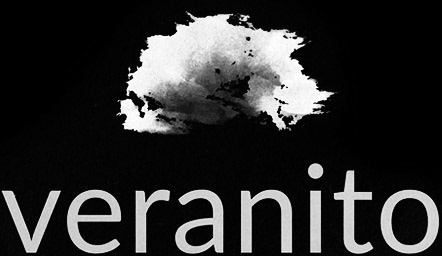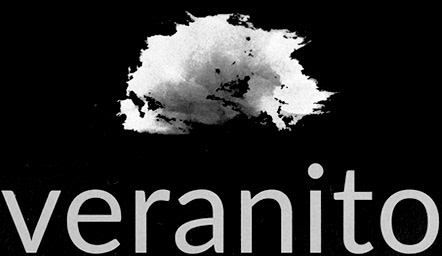Where to wacht
Brasil
Tito is a shy 10-year-old boy who lives with his mother. Suddenly, an unusual epidemic starts to spread, making people sick whenever they get scared. Tito quickly discovers that the cure is somehow related to his missing father’s research on bird song. He embarks on a journey to save the world from the epidemic with his friends. Tito’s search for the antidote becomes a quest for his missing father and for his own identity. He embarks on a journey to save the world from the epidemic with his friends. Tito’s search for the antidote becomes a quest for his missing father and for his own identity.
Tito é um menino tímido de 10 anos que vive com sua mãe. De repente, uma estranha epidemia começa a se espalhar, fazendo com que pessoas fiquem doentes quando se assustam. Tito rapidamente descobre que a cura está relacionada à pesquisa feita por seu pai ausente sobre o canto dos pássaros. Ele embarca numa jornada com seus amigos para salvar o mundo da epidemia.
A busca de Tito pelo antídoto se torna uma jornada para encontrar seu pai ausente e sua própria identidade.
Part of making of with focus on the composition
Because we were dealing with issues such as fear and social chaos, during the research stage we felt a strong identification with European expressionist movement from the beginning of the 20th century. We wanted to make the whole movie using oil-paint, but this turned out not to be a viable production model. “Tito and the Birds”’s graphical vein is the result of the interplay between a relentless search for the best possible way to convey gesture and express what we wanted to express, and the need to adapt our wishes to the resources we had. So, for example, we photographed some oil-paint brushstrokes, which were then used by the digital painting staff. Later, during composition, additional paint textures and strokes were inserted in order to enhance light ambiance, shadows and other interactions, as well as animation of effects such as smoke, fire etc. From the storyboard and layout phases, we had an idea of how much distortion each shot would have: as the fear outbreak spreads, the background becomes more and more distorted. The character’s design also evolved over time. At first they were larger-headed, cuter, but this made framing more difficult. So they gained more realistic, humanoid proportions. Using the cut-out technique, the simplicity of the shapes enabled the animators to invest more time in the drawings and pose shifts, making their gestures more expressive but at the same time able to accompany the harsher, more broken language of the brushstrokes’ stopmotion.
Como estávamos lidando com questões como o medo e o caos social, durante a fase de pesquisa sentimos uma forte identificação com o movimento expressionista europeu do começo do século XX. Queríamos fazer todo o filme utilizando pintura a óleo, mas isto mostrou não ser um modelo de produção viável. A veia gráfica de “Tito e os Pássaros” é o resultado da interação entre uma busca incessante pelo melhor modo possível para transmitir o gesto e a expressão que queríamos expressar e a necessidade de adaptar os nossos desejos aos recursos que tínhamos. Assim, por exemplo, fotografamos algumas pinceladas de tinta a óleo, que foram então utilizadas pelo pessoal da pintura digital. Depois, durante a composição, texturas e pinceladas adicionais de tinta foram inseridas para realçar a ambientação da luz, sombras e outras interações, bem como a animação de efeitos como fumaça, fogo, etc. A partir das fases de roteiro e layout, tínhamos uma ideia de quanta distorção cada tomada teria: à medida que o surto de medo se espalha, o cenário fica cada vez mais distorcido. O desenho dos personagens também evoluiu com o tempo. No início, eles tinham cabeças maiores e mais fofas, mas isto tornou o enquadramento mais difícil. Então eles ganharam proporções mais realistas, humanoides. Utilizando a técnica de corte (cut-out), a simplicidade das formas permitiu que os animadores investissem mais tempo nos desenhos e nas mudanças de atitude, tornando os gestos mais expressivos, porém ao mesmo tempo capazes de acompanhar a linguagem mais quebrada da animação (stopmotion) utilizando pinceladas.
making of
World Press
“With its distinctive style and timely message, this kid-friendly story of a group of friends who stand up to a fear-mongering television bully could resonate with voters. Made in Brazil, the expressionistic toon’s hand-painted look recalls last year’s Loving Vincent.” – PETER DeBRUGE, Variety
“Glorious oil-painting visuals combined with an eccentric but impassioned political allegory keep this unusual Brazilian animation airborne.” – GUY LODGE, Variety
“One of the most memorable films of 2018.” – ELVIS MITCHELL, Film Curator of Film Independent and host of KCRW “The Treatment”
"A stunningly unique and beautiful animated gem." – OKTAY EGE KOZAK, Paste Magazine
“The animation on display is gorgeous. Blending digital, graphic animation, and oil paintings, the style is unique and colorful.” – ALAN FRENCH, Awards Circuit
“Glorious oil-painting visuals combined with an eccentric but impassioned political allegory keep this unusual Brazilian animation airborne.” – GUY LODGE, Variety
“One of the most memorable films of 2018.” – ELVIS MITCHELL, Film Curator of Film Independent and host of KCRW “The Treatment”
"A stunningly unique and beautiful animated gem." – OKTAY EGE KOZAK, Paste Magazine
“The animation on display is gorgeous. Blending digital, graphic animation, and oil paintings, the style is unique and colorful.” – ALAN FRENCH, Awards Circuit
“ Gorgeous to look at and such a lovely, timely message.” – CLAUDIA PUIG, LAFCA
“Exquisite.” – BILL DESOWITZ, Indiewire
“The animated Brazilian parable and fantasy Tito and the Birds crafts dazzling images through a combination of line drawings, painterly brush work, and computer animation in service of a story that blends childlike imagination with modern day social and political fears.” – ANDREW PARKER, The Gate
“It's a gorgeous film, both in the way it looks and its story, and one that I hope finds a global audience as it certainly deserves the attention and acclaim.” – ALEX BILLINGTON, FirstShowing.net
“Exquisite.” – BILL DESOWITZ, Indiewire
“The animated Brazilian parable and fantasy Tito and the Birds crafts dazzling images through a combination of line drawings, painterly brush work, and computer animation in service of a story that blends childlike imagination with modern day social and political fears.” – ANDREW PARKER, The Gate
“It's a gorgeous film, both in the way it looks and its story, and one that I hope finds a global audience as it certainly deserves the attention and acclaim.” – ALEX BILLINGTON, FirstShowing.net
Direção: Gustavo Steinberg - Gabriel Bitar - André Catoto Produção: Gustavo Steinberg Ideia original e roteiro: Eduardo Benaim - Gustavo Steinberg | Animação: Split Studio | Direção de arte: Gabriel Bitar - Paulo Torinno - Vini Wolf | Produção Executiva: Daniel Greco - Felipe Sabino | Trilha Sonora Original: Ruben Feffer - Gustavo Kurlat | Direção de animação: Chico Bela - Vini Wolf | Produção de linha: Cleber Rosseto | Voz original e pós-produção de Áudio: Ultrassom Music Ideas | Direção de Voz: Melissa Garcia | Montagem: Vania Debs - Thiago Ozelami | Departamento de Composição Coordenadora de composição: Nana Lahóz | Supervisor de composição: Gabriel Bitar | Animação a óleo: Gabriel Bitar | Compositores: Gabriel Bitar - Daniel Almeida “Tres D” - Luiz Henrique Rodrigues - Caio Bucaretchi | Unidade de retakes Compositor: Daniel Almeida “Tres D” | Assistente de Composição: Aline Nabisi | Pintura a óleo Adicional: David Schumaker Gabriel Spinelli

